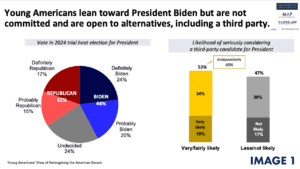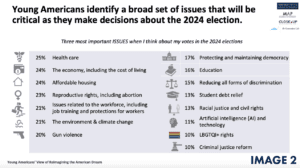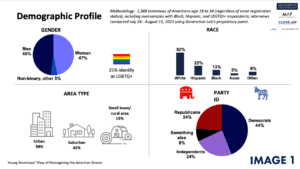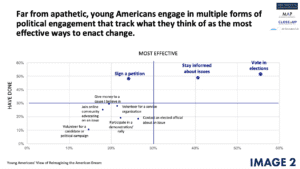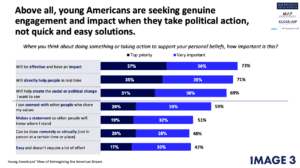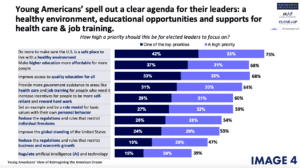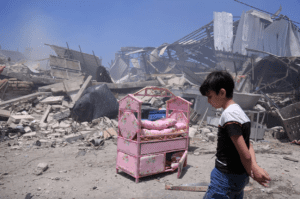 The Hamas Attack Launches
The Hamas Attack Launches
On the morning of October 7, 2023, the militant Palestinian nationalist group Hamas unleashed an unprecedented terrorist attack against Israel. Over 5,000 rockets launched from the Hamas-controlled Gaza Strip (one of two semi-autonomous regions of Israel designated for Palestinian residents). These rocket attacks were immediately followed by thousands of Hamas fighters tearing down fences and barricades and crossing into Israel on trucks, on armored vehicles, aboard boats, on foot, and in some cases via small paraglider aircraft. Hamas killed over 1,400 Israelis, wounded over 3,000 more, and took over 200 Israeli hostages who remain in captivity.1
Hamas has claimed its actions are justified by what it views to be the criminal treatment of Palestinians in Israel by the Israeli government, citing the conditions Palestinians live under in the Gaza Strip and West Bank. Israel has categorized the Hamas attack as unprovoked and unjustifiably brutal while also criticizing the role they have played in disrupting peace efforts and preventing government aid from reaching Palestinians living in Gaza.2
The Israeli Response
Israeli Prime Minister Benjamin Netanyahu announced that Israel is in a state of war. The ensuing counterattack by Israeli Defense Forces, including ground operations by Israeli troops and bombing attacks in Gaza, have claimed the lives of over 3,000 Palestinians and injured an additional 12,500.3 The IDF has begun to amass hundreds of thousands of soldiers along the border for an expected invasion of the Gaza Strip.4 As the air campaign has continued and the invasion is prepared, the Israeli government has issued an evacuation warning to the over one million Palestinians currently living in the northern part of the territory, leaving hundreds of thousands homeless.5 Another Israeli response has been to shut down water and electricity to the Gaza Strip which, as an already impoverished and overpopulated area, faces the possibility of a humanitarian crisis as access to food, shelter, clean water, and medical care dwindles.6
The Role of the United States and Allies
Adding to the stakes in the Israel-Hamas conflict have been a series of rocket and artillery exchanges between Israel and soldiers in southern Lebanon along Israel’s northern border on the opposite side of the country. These soldiers are suspected of belonging to another militant faction—Hezbollah—who have bases of power throughout Lebanon and Syria.7 Israel has also bombed airstrips in Lebanon and Syria in an effort to limit the supply lines of Hezbollah fighters.8 Hezbollah and Hamas have historically benefited from the support of many of Israel’s neighboring countries, particularly Iran. This has prompted suspicions that Iran may have been involved in both the Hezbollah and Hamas attacks.9 Meanwhile, Iranian officials have released statements warning Israel about the consequences of invading Gaza.10
While Israel does not have many close allies in the region and has been at odds with most of its Arab-majority/Muslim-majority neighbors since it was founded in 1948 (including several wars), Israel does benefit from strong relations with many powerful nations around the world, including most members of the European Union and, particularly, the United States. Since 1951, the United States has provided over $225 billion in military aid to Israel (adjusting for inflation), accounting for over 70 percent of all military aid Israel receives from other countries. U.S. aid to Israel accounts for a full 16 percent of Israel’s defense budget.11
In general, pro-Israeli policies are widely popular in the United States. Every president since 1948 has made a firm commitment to supporting the State of Israel and affirmed Israel’s right to defend itself; nearly every member of Congress has gone on record expressing the same.12 A small minority of U.S. elected officials have expressed criticism of Israel and its policies toward its Palestinian citizens, but these statements typically are met with fervent opposition by colleagues.13 However, the United States has also directed several billion dollars of aid to the Palestinian Authority over several decades.14
The U.S. role in the conflict was recently highlighted by two developments in the Israel-Hamas war. On October 17, a hospital in Gaza suffered a missile strike, drawing alarm from the international community. Initially, the strike was attributed to Israel. However, the IDF was quick to release intelligence suggesting that the incident was the result of a misfired missile from Islamic Jihad, a pro-Hamas faction within Gaza. The confusion surrounding the attack hung over President Joe Biden’s visit to Israel the following day, during which he announced an agreement between the United States and Israel to allow humanitarian aid to enter Gaza from Egypt under the conditions that it be subject to inspection and that it be kept from pro-Hamas forces.15
The Fear of Escalation
The strength of the U.S.-Israel alliance, as well as the staunch opposition to Israel by Hamas, Hezbollah, and most of its neighboring countries—many of which also have unfavorable views of the U.S. role in the Middle East—contributes to fears of escalation. As the well-armed and organized Israeli military prepares to take action in Gaza, speculation swirls around what actions the international community will deem acceptable and what might be considered going too far. Conversely, on top of launching the first strike, Hamas has encouraged Palestinians to refuse to comply with IDF evacuation warnings and prepare to fight, and has shown no willingness to end the fighting.16 The stakes of the conflict have left many wondering if the Israel-Hamas war can remain confined and others asking whether it should.17
Discussion Questions
- Should the international community, including the United States, take a more active role in the Israel-Hamas war? What kinds of actions do you think would be appropriate? Are there any actions which should be avoided?
- At least 30 American citizens were killed in the initial Hamas attacks that began the war. Does this give the United States the right to take direct military action itself? Should the United States take such action?
- As explained in the article, the United States currently provides foreign aid to both Israel and the Palestinian Authority. Should the United States continue to support both groups or should these priorities be re-evaluated?
- Several countries around the world, not including the United States, have shut down and even banned protests that express pro-Hamas or antisemitic (anti-Jewish) messages on the grounds that they promote violence. Do you agree with this policy? How, if at all, should the U.S. government or state/local governments address similar protests in the United States?
RELATED POSTS
As always, we encourage you to join the discussion with your comments or questions below.
Sources
[1] https://abcnews.go.com/International/timeline-surprise-rocket-attack-hamas-israel/story?id=103816006
[2] https://www.foreignaffairs.com/israel/war-hamas-always-wanted
[3] https://abcnews.go.com/International/timeline-surprise-rocket-attack-hamas-israel/story?id=103816006
[4] https://www.aljazeera.com/news/2023/10/16/israeli-forces-tanks-amass-at-border-with-gaza
[5] https://www.hrw.org/news/2023/10/16/why-israels-gaza-evacuation-order-so-alarming#:~:text=On%20Friday%2C%20the%20Israeli%20army,for%20the%20safety%20of%20civilians.
[6] https://www.reuters.com/world/middle-east/hamas-says-gaza-water-still-cut-off-israel-says-some-provided-south-2023-10-16/#:~:text=Israel%20stopped%20piping%20water%20to,it%20was%20resuming%20some%20supplies.
[7] https://apnews.com/article/lebanon-israel-hezbollah-clashes-cadccde8c6ce5400ee36fd12d3bfea52
[8] https://www.reuters.com/world/middle-east/syria-state-tv-says-israeli-attack-targets-aleppo-damascus-airports-2023-10-12/
[9] https://apnews.com/article/lebanon-israel-palestinian-hamas-hezbollah-iran-2ccfaa49139358e6d2add89878a0cfe4
[10] https://www.aljazeera.com/news/2023/10/17/iran-warns-of-preemptive-action-against-israel-amid-gaza-war
[11] https://usafacts.org/articles/how-much-military-aid-does-the-us-give-to-israel/#:~:text=Between%201951%20and%202022%2C%20Israel,Israel%20has%20funded%20military%20efforts.
[12] https://www.chosenpeople.com/u-s-presidents-israel-1948-today/
[13] https://thehill.com/homenews/house/4260972-tlaib-criticizes-biden-after-israel-strikes-hospital-in-gaza-we-will-remember-where-you-stood/
[14] https://www.state.gov/u-s-support-for-the-palestinian-people/
[15] https://www.reuters.com/world/biden-heads-middle-east-inflamed-by-gaza-hospital-blast-2023-10-18/
[16] https://www.reuters.com/world/middle-east/hamas-tells-gaza-residents-stay-home-israel-ground-offensive-looms-2023-10-13/
[17] https://www.aljazeera.com/news/2023/10/15/iran-warns-israel-of-regional-escalation-if-gaza-ground-offensive-launched
 The Hamas Attack Launches
The Hamas Attack Launches